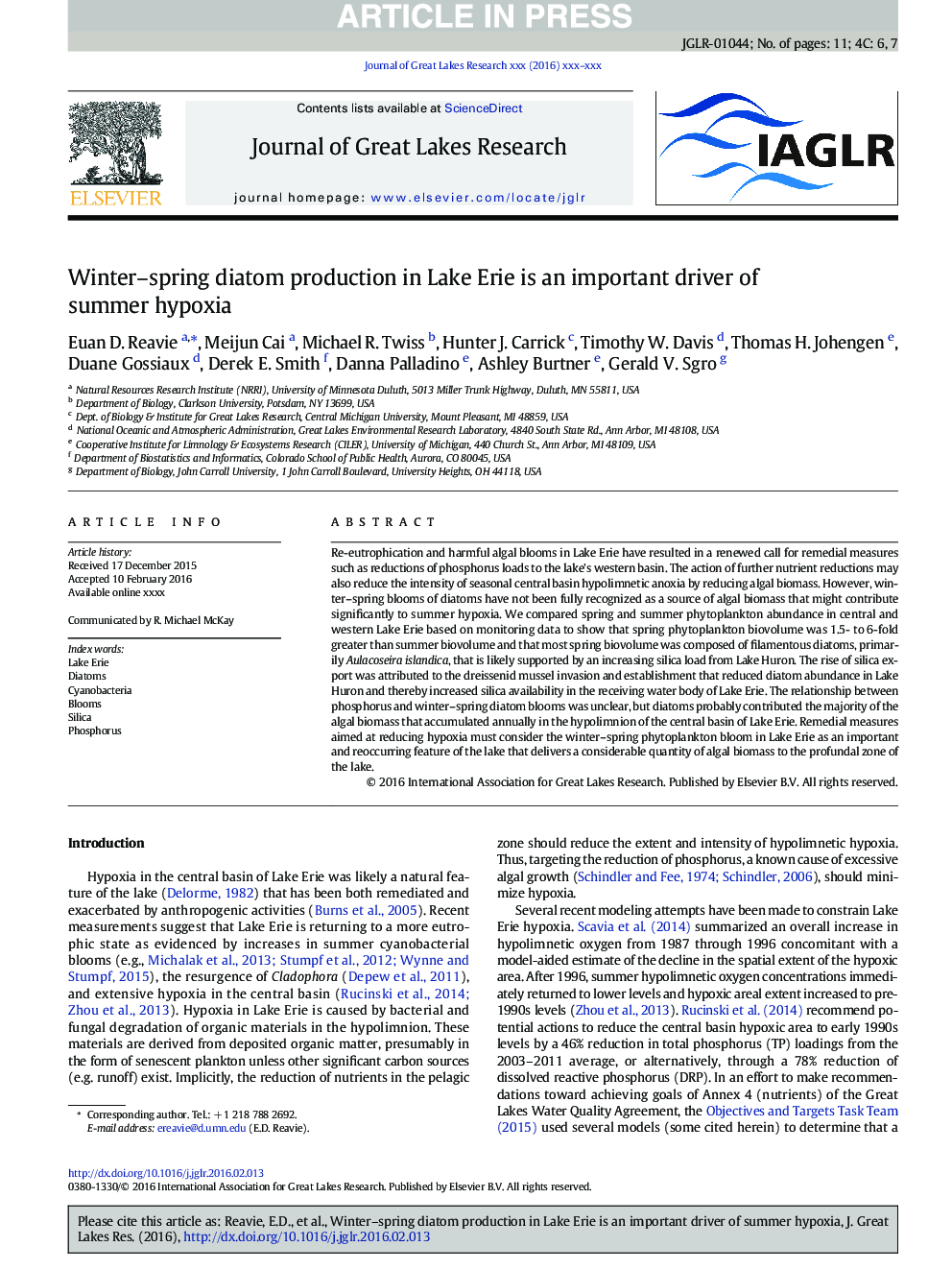| Article ID | Journal | Published Year | Pages | File Type |
|---|---|---|---|---|
| 6304665 | Journal of Great Lakes Research | 2016 | 11 Pages |
Abstract
Re-eutrophication and harmful algal blooms in Lake Erie have resulted in a renewed call for remedial measures such as reductions of phosphorus loads to the lake's western basin. The action of further nutrient reductions may also reduce the intensity of seasonal central basin hypolimnetic anoxia by reducing algal biomass. However, winter-spring blooms of diatoms have not been fully recognized as a source of algal biomass that might contribute significantly to summer hypoxia. We compared spring and summer phytoplankton abundance in central and western Lake Erie based on monitoring data to show that spring phytoplankton biovolume was 1.5- to 6-fold greater than summer biovolume and that most spring biovolume was composed of filamentous diatoms, primarily Aulacoseira islandica, that is likely supported by an increasing silica load from Lake Huron. The rise of silica export was attributed to the dreissenid mussel invasion and establishment that reduced diatom abundance in Lake Huron and thereby increased silica availability in the receiving water body of Lake Erie. The relationship between phosphorus and winter-spring diatom blooms was unclear, but diatoms probably contributed the majority of the algal biomass that accumulated annually in the hypolimnion of the central basin of Lake Erie. Remedial measures aimed at reducing hypoxia must consider the winter-spring phytoplankton bloom in Lake Erie as an important and reoccurring feature of the lake that delivers a considerable quantity of algal biomass to the profundal zone of the lake.
Related Topics
Physical Sciences and Engineering
Earth and Planetary Sciences
Earth and Planetary Sciences (General)
Authors
Euan D. Reavie, Meijun Cai, Michael R. Twiss, Hunter J. Carrick, Timothy W. Davis, Thomas H. Johengen, Duane Gossiaux, Derek E. Smith, Danna Palladino, Ashley Burtner, Gerald V. Sgro,
